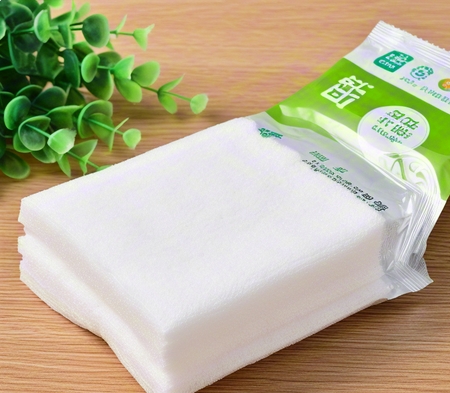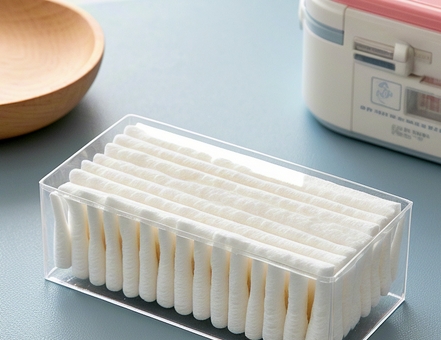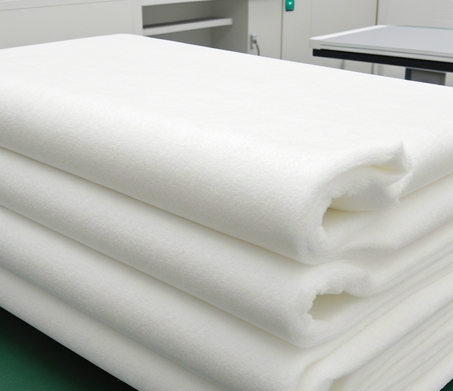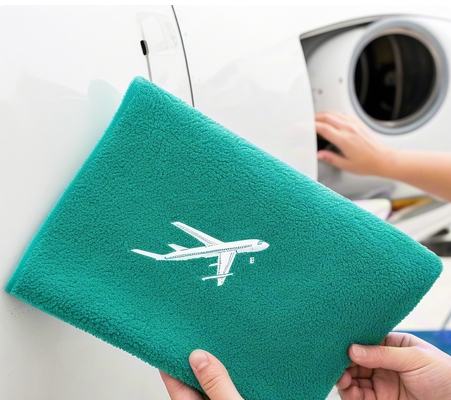Language

An innovative example of industrial-grade cleaning materials: In-depth analysis of dust-free cloth technical characteristics and application scenarios
As the core consumable in the field of modern industrial cleaning, dust-free cloth has irreplaceable roles in high-end fields such as electronic manufacturing, optical instruments, and medical devices due to its unique material structure and performance advantages. This type of professional cleaning materials achieves a cleanliness standard that is difficult to reach by ordinary wipe materials through innovative fiber braiding processes, and is especially suitable for the removal of micron-level pollutants.
In terms of material research and development, the industry is mainly divided into two major technical routes: ordinary fiber dust-free cloth and microfiber dust-free cloth. The former adopts a 100% continuous polyester fiber double braiding process to form a dense three-dimensional mesh structure, with a fiber density of 200 pieces per cm² per unit area, which can effectively intercept particles above 0.5μm. The latter innovatively combines 75% polyester and 25% nylon composite spinning technology, and the diameter of the monofilament has been reduced to 0.1 point special level, equivalent to 1/100 of human hair. This nano-scale fiber structure increases the cleaning efficiency by 30%.
The quality control system of the production process directly determines product reliability. In the internationally certified Class 10-level ultra-clean workshop, the entire process of particle monitoring is implemented from raw material processing to finished product packaging, ensuring that the number of residual particles per square foot of the surface is strictly controlled within 100. Taking laser edge sealing technology as an example, this cutting process using 10.6μm wavelength CO₂ laser can achieve edge melting accuracy ±0.05mm, completely eliminating the risk of fiber shedding.
In specific application scenarios, the performance differences between different specifications of products are significant: 4-inch cold-cut ordinary fiber dust-free cloth is often used for laboratory equipment maintenance, and its water absorption of 0.3g/cm³ can quickly treat reagent residues; while the 9-inch ultrasonic edge-sealed ultrafine fiber model is listed as standard consumables by semiconductor companies, and its unique trench fiber arrangement can increase the clearance of metal debris on the wafer surface to 99.97%. The medical device industry prefers knitted products with tens of thousands of purification standards, and its biocompatibility certification ensures safety in contact with human tissues.
It is worth noting that material selection needs to be accurately matched with the cleaning scene. Taking the LCD panel production line as an example, the plain woven dust-free cloth of the level 10 purification standard can avoid the occurrence of moiré stripes, while the knitted products of the level 100 standard are more suitable for the wiping operation of curved lenses. Industry data shows that correct selection can increase product yield by 2-3 percentage points, which means that each production line can reduce mass loss by one million per year.
With the upgrade of intelligent manufacturing, dust-free cloth technology continues to iterate and innovate. Recent industry breakthroughs include antibacterial products of graphene-coated fibers, and intelligent consumables management systems that integrate IoT chips. These technological advances are redefining the standard paradigm of industrial cleaning and providing more reliable quality assurance for the high-end manufacturing field.
Analysis on the selection and application technology of industrial-grade dust-free cloth
In response to the technical needs of different cleaning scenarios, the market provides a diversified dust-free cloth product system. Taking the 1009S straight-texture polyester fiber dust-free cloth as an example, its cross-woven structure is particularly suitable for precision optical component wipes; while the 3009A microfiber model has shown excellent performance in the field of semiconductor wafer cleaning with its 0.11 denier-grade microfiber diameter. It is worth noting that the choice of ordinary fiber dust-free cloth and high-end products must be matched according to the ISO 14644-1 cleanliness standard.
The edge sealing process directly affects the use effect of dust-free cloth. At present, mainstream technologies are developing step by step: although basic cold-cut edge sealing is cheap, there is a risk of 3-5μm-level fiber shedding; laser edge sealing uses instantaneous high-temperature melting technology to make the edge sealing degree reach more than 99.7%, and can meet the requirements of Class 10-level clean room with plasma cleaning treatment; although ultrasonic edge sealing can achieve molecular-level fusion effect, its equipment investment cost is more than 40% higher than that of laser technology. Medical equipment manufacturers are advised to give priority to laser edge sealing products, while ordinary electronic assembly lines can consider economical solutions.
In the cleaning and maintenance process, water quality parameters are crucial to maintaining the performance of dust-free cloth. The cleaning solution of 18.2MΩ·cm ultrapure water combined with neutral antistatic agent (pH 6.5-7.5) can maintain the cleanliness of dust-free cloth at level 100 to 20 cleaning cycles. Experimental data show that using hard water will cause fiber calcification to be 3 times faster and shorten product life. It is recommended to use HEPA filtered 40℃ circulation air system to avoid fiber brittleness caused by sun exposure.
Professional-level operating specifications require users to follow the "operating room-level" operating standards: wear dust-free gloves with a 5μm aperture and FFP2-level masks, and unseal the double-layer vacuum packaging in the positive pressure clean workbench. When wiping, the "envelope" folding method should be used, and the four sides should be completely wrapped to form a cleaning working surface, and one-way wiped at a uniform speed of 15-20cm/s. For high-value surface treatment, it is recommended to use laser edge-sealed dust-free cloth with isopropanol solvent, which has a carrier volume of 0.3ml/cm² to completely wet the fiber and avoid drip loss.
From the perspective of technological evolution, the new composite edge sealing technology is breaking through the traditional limitations - through the collaborative process of laser premelting and ultrasonic refining, the edge strength is increased to 2.8N/mm², and the fiber shedding rate is controlled below 0.01pcs/cm³. This innovation has enabled Dust-Free to achieve a 96% yield breakthrough in the field of aerospace-grade precision device cleaning, marking a key step for the industry toward nano-grade cleaning solutions.
In the field of precision manufacturing, the choice of professional-grade wipe materials directly affects product yield. Dust-free cloths show excellent performance in surface treatment processes due to their unique physical properties. When ordinary fiber dust-free cloth is difficult to meet the cleaning standards, the dust-free cloth processed through special processes can achieve a contact surface coverage of 99.8%, and its three-dimensional mesh structure can effectively capture 0.1μm-level particles. Laboratory data shows that after 18.
After cleaning with 2MΩ·cm ultrapure water, the particle release amount of this material is less than 5 per square centimeter, fully meeting the ISO 14644-1 Class 5 cleanliness standard.
This high-spec cleaning material is irreplaceable in the field of cutting-edge manufacturing. Taking the semiconductor industry as an example, in the 12-inch wafer production line, dust-free cloth is used in the lithography machine mirror group maintenance and chip packaging process. In aerospace composite workshops, its unique low electrostatic properties can prevent contamination of carbon fiber prepregs. What is more noteworthy is that the medical equipment assembly line, dust-free cloth in the joint replacement prosthesis polishing process, can effectively prevent secondary contamination of metal debris.
Compared with ordinary industrial wipe materials, professional-grade dust-free cloth has significant advantages in microstructure design. Its double-sided special-shaped fiber structure is similar to the nano-level "clean tentacle", which can not only adsorb organic solvent residues, but also avoid scratching the optical coating surface. In LCD panel production lines, this feature can reduce wiping scratch problems by more than 85%.
Tags:
RELATED RESOURCES

Analysis of the core technology of dust-free pre-wipes: ISO certification + examples of cleaning per
Analysis of core technology of dust-free pre-wet wipes and cross-domain application practiceIn the high-end ma......
More

How to Choose Compliant Swabs?TOC Testing + Sterilization Standards to Improve Clean Sampling Pass R
In the field of pharmaceutical and biotechnology, the cleanliness control of equipment and production environm......
More

Class 100 dustless cloth technical specifications: ISO standards and ultrasonic edge sealing process
Technical specifications and in-depth interpretation of manufacturing process of a hundred-level dust-free clo......
More

How Aircraft Wipes Achieve Zero-Contamination Aircraft Engine Cleaning
Wipe star aviation-grade cleaning consumables are manufactured using innovative hydros pinning process, and th......
More
Related Products
Room 101, Building 1, Angeer Factory, No.4, Hetian Road, Shatian Community, Kengzi Street, Pingshan District, Shenzhen, Guangdong, P.R. China 518122
info@wipestar.com
+86-755-89616775
+86-755-89616773
Related Products
RELATED RESOURCES

Analysis of the core technology of dust-free pre-wipes: ISO certification + examples of cleaning per
Analysis of core technology of dust-free pre-wet wipes and cross-domain application practiceIn the high-end ma.........
More

How to Choose Compliant Swabs?TOC Testing + Sterilization Standards to Improve Clean Sampling Pass R
In the field of pharmaceutical and biotechnology, the cleanliness control of equipment and production environm.........
More
WIPESTAR
微信官方公众号